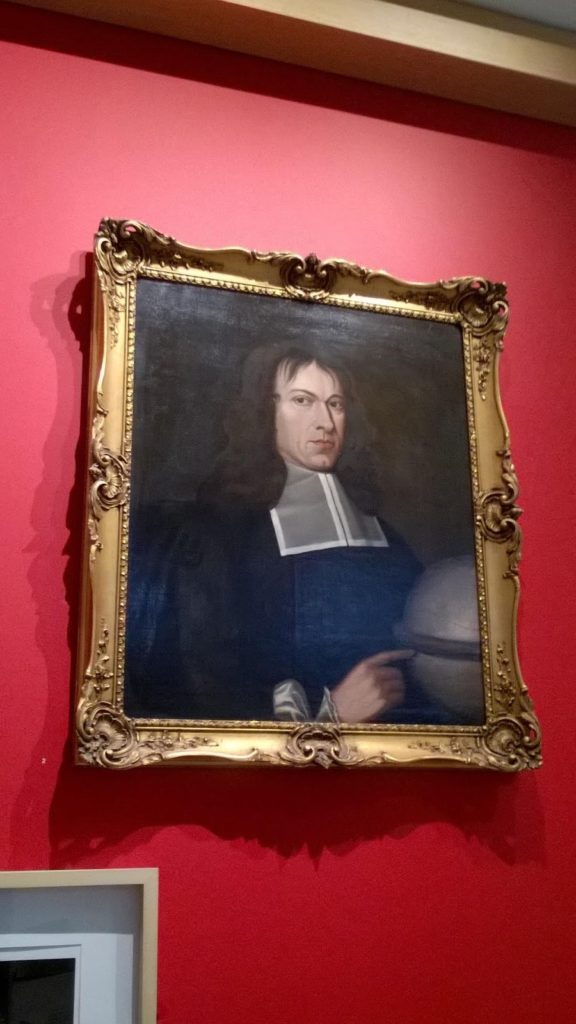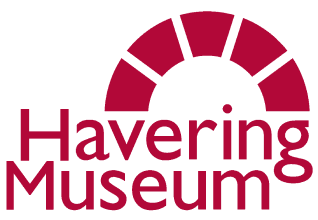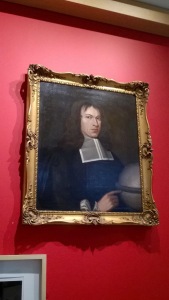My Favourite Object

By Charlie Keeble, Collections Volunteer
The Portrait of William Derham
My favourite item in Havering Museum is the portrait of William Derham. The reason I like it is because of his contribution to science that would go on to become a crucial limit that future aviation pioneers would challenge against. Derham was born in Worcestershire in 1657. Educated at Trinity College, Oxford from 1675 to 1679 in the field of natural philosophy, a branch of science we now know today as physics. Derham came to Upminster in 1689 as the town Rector, a type of parish priest in Anglican churches.
During his time in Upminster Derham resided in St Laurence’s church where he conducted scientific experiments and wrote many books on the subject of teleology. Teleology is the explanation whereby a living thing or an objects existence is given for a purpose. One example of this is the use of cutlery to allow humans to eat food or that an acorn is created to give a tree a purpose to show that it is fully grown.
But teleology wasn’t what Derham was famous for. Amongst his activities in science and nature included the collection of insects and birds, recording a solar and lunar eclipse, and researching bird migration. At the time when Upminster was a small rural town in 1708 he made an experiment to study the speed of sound. Derham got his friends to fire shotguns at various visible distances from St Laurence’s church. Using a pair of synchronised watches the gunmen fired at set times, whilst Derham was based at the church at his 16 foot long telescope where he observed the flash bangs of the guns and measured the time it took for the sound of the bang to reach him using a half-second pendulum. Derham calculated the speed of sound in air to be 344 metres per second (about 1,127 feet per second). This is 1,236 km per hour (768 mph), so the sound barrier is just a little over one thousand km per hour. This statistic would be become an ultimate target of aviation pioneers in the post war era when it came to the development of supersonic airliners and fighter planes.
Derham was a friend of another notable Essex scientist called John Ray whom he shared his interest in plants and animals with. Ray had made a name for himself as the inventor of the taxonomy system, the classification of which animals and plants are catalogued according to distinct differences and similarities with each other.
William Derham died in 1735, with his death recorded at a burial at St Laurence’s church. However, the precise site of his burial is unknown, and following his request there is no memorial to him.

